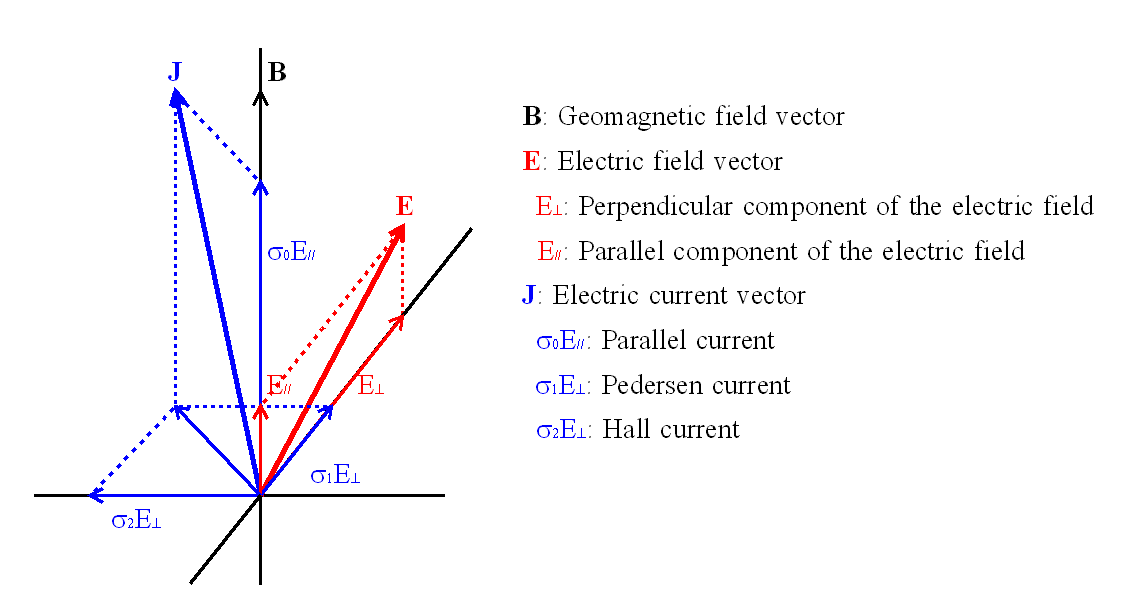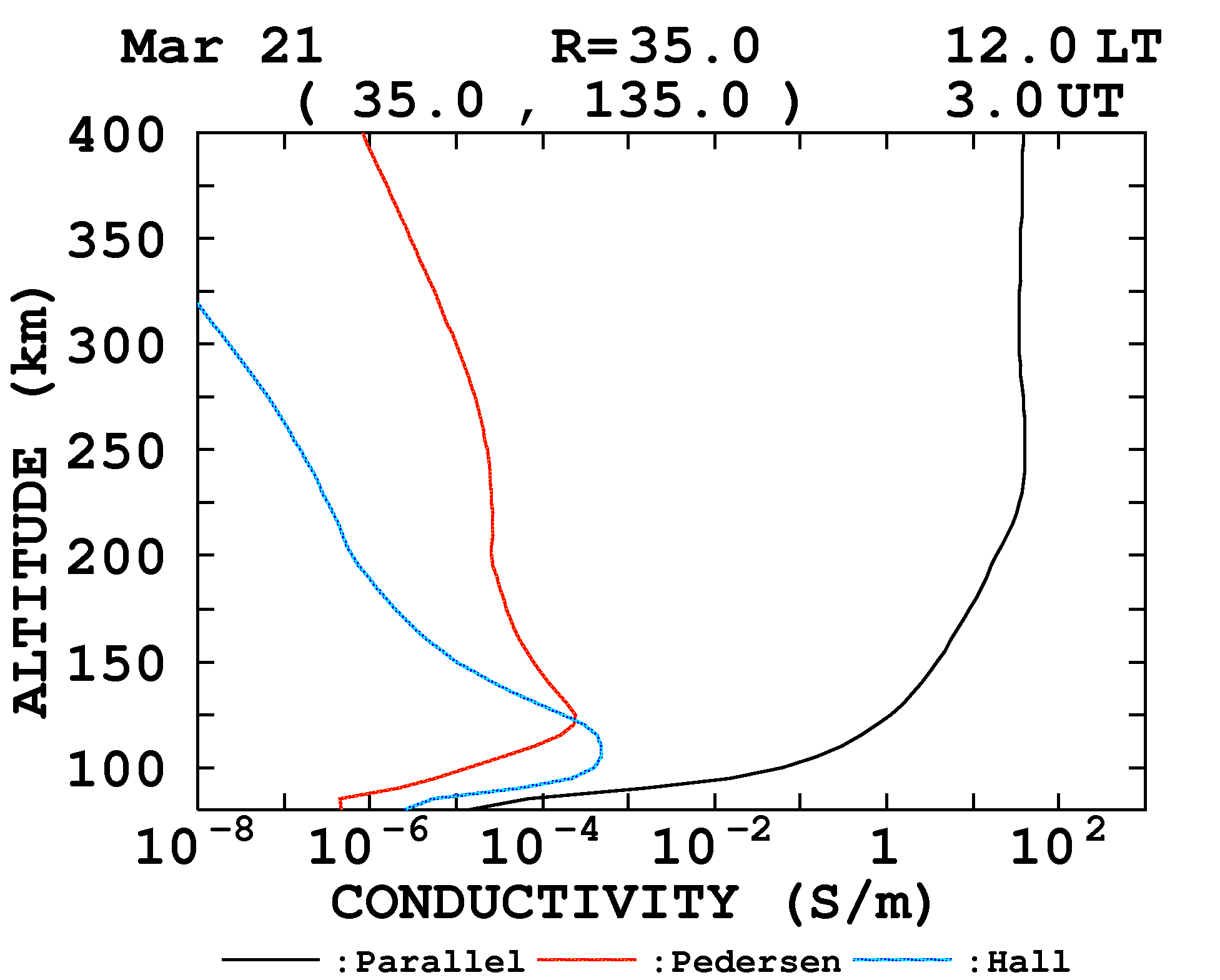On the ionospheric conductivity

Three conductivities in the ionosphere
Equation of the conductivity in the ionosphere
Two dimensional conductivity
Ionospheric conductivity model (height profile)
Global ionospheric conductivity model


Introduction The ionosphere is the region where plasma density is maximum in the Earth's upper atmosphere. Its altitude ranges almost from 60 to 1000 km. It acts not only as the reflection or absorption layer of the radio wave, but as an electric current layer. The ionospheric currents cause large part of the variation of the geomagnetic field, although most of the geomagnetic field itself is generated by the dynamo action in the Earth's core. The currents flow according to the Ohm's law, but the electric conductivity is anisotropic because of the effect of the geomagnetic field, and three conductivities are defined. Those are parallel, Pedersen and Hall conductivities, and additionally two dimensional conductivity is used for some purposes. Unit of these conductivities is S/m (=1/(Ωm)), and that of the height integrated conductivity is S. Their meanings are as follows:
|
 Relationship between electric field and current in the ionosphere  An example of the daytime height profile of the ionospheric conductivity. An example of the daytime height profile of Black, red and blue lines represent Parallel, Pedersen and Hall conductivities, respectively. The conductivity depends on various parameters such as location, time, season and solar activity. For example, the conductivity at night reduces to one several-tenths of that at noon. |
When we take the coordinate in which X is magnetic north and Y is magnetic east, and horizontal electric field is (EX, EY), current density (jX, jY) is expressed as: jX = σXXEX + σXYEYwhere σXX, σYY and σXY are the elements of the two dimensional conductivity. They can be written using σ0, σ1 and σ2 and geomagnetic dip angle I as follows: σXX = (σ0*σ1)/(σ1*cos2I + σ0*sin2I) In most cases height integrated values (frequently denoted as ΣXX, ΣYY and ΣXY) of σXX, σYY and σXY are used because of the assumption in the derivation. | |